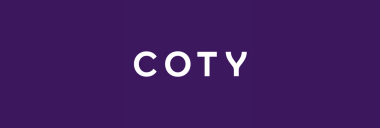Redefining Hearing Aids with Cadence DSPs
Rhea-AI Summary
Cadence Design Systems is transforming hearing aid technology through advanced DSP solutions. The company's Tensilica HiFi and Fusion F1 DSP family offers low-power, high-performance solutions for modern hearing aids, addressing key challenges in the industry. With over 5% of the global population requiring hearing rehabilitation, Cadence's technology focuses on improving signal processing, noise reduction, and incorporating AI capabilities. The company has collaborated with GlobalFoundries, Hoerzentrum Oldenburg, and Leibniz University Hannover to develop SmartHeAP, the industry's first binaural hearing aid system-on-chip prototype.
Positive
- Development of industry's first binaural hearing aid system-on-chip prototype (SmartHeAP)
- Strategic collaboration with GlobalFoundries, Hoerzentrum Oldenburg, and Leibniz University Hannover
- Advancement in DSP technology offering both low power consumption and high performance
Negative
- None.
News Market Reaction 1 Alert
On the day this news was published, CDNS gained 0.82%, reflecting a mild positive market reaction.
Data tracked by StockTitan Argus on the day of publication.
NORTHAMPTON, MA / ACCESSWIRE / November 21, 2024 / Cadence Design Systems
Written by Vinod Khera, Community Member
Hearing is one of the most essential senses for engaging with the world. It enables us to converse, appreciate music, and remain alert to our surroundings. Hearing loss is a prevalent issue affecting millions of individuals globally and disconnecting them from a world where sound is vital to others and the environment. The World Health Organization (WHO) reports that over
Although hearing aids have been available for many years, historically, access to these critical devices has been insufficient, resulting in numerous individuals lacking the necessary support. However, recent advances in hearing aid technology promise improved acoustic experiences, employing modern techniques like binaural processing and neural networks. These innovations demand sophisticated architecture to balance high memory needs with low power consumption in a user-friendly design. Cadence is at the forefront of this technological evolution, offering tools and IP solutions that enhance the accessibility, efficiency, and impact of hearing aids, paving the way for a more inclusive future.
This blog explores how Cadence's advanced DSPs are transforming hearing aid design and making them more accessible, efficient, and impactful.
Hearing Aids: A Testament to Human Ingenuity
The transition from analog to digital technology in the late 20th century further transformed hearing aids, offering superior sound quality, customization, and the ability to connect to various electronic devices, thus enhancing the user experience markedly. Today's hearing aids are highly effective, versatile, and nearly invisible, a significant advancement from early attempts to address hearing loss. They also feature advanced noise cancellation and connectivity options, allowing users to integrate seamlessly into the digital world. This progression not only highlights the industry's commitment to improving user experience and accessibility but also offers a glimpse into a future where hearing loss is no longer a barrier.
Challenges
Despite advancements and sophistication, there are several challenges related to hearing aid design and adoption. Users demand smaller, more discreet devices that don't sacrifice performance. While the shift towards sleeker designs is aesthetically pleasing, it introduces substantial complexities in product design. Designers face the challenges of integrating essential components, such as batteries and peripherals, into increasingly compact spaces. Power consumption remains a critical concern, as these devices must remain operational throughout the day. Leveraging neural networks to enhance the signal-to-noise ratio (SNR) for better quality demands additional memory capacity.
Consequently, there is a pressing need for flexible, low-power architectures that incorporate all necessary memory and peripherals without compromising the device's compact size. Adopting AI for adjusting hearing aid volume to fit an individual's specific auditory requirements is a significant challenge and demands more memory and effort. Besides this, reliability and cost are significant challenges for manufacturers.
Cadence's Role in Transforming Hearing Aids
In hearing aid development, the capacity to evaluate the energy efficiency of SoCs across different frequencies in real time is crucial. These applications demand cohesive, energy-efficient solutions that can uphold high performance. The Cadence Tensilica HiFi and Fusion F1 DSP family emphasize minimal power usage while providing robust performance, ideally suited for a wide range of audio and voice applications.
The Cadence Tensilica HiFi DSP family, a high-performance audio technology with AI acceleration and advanced DSP capability, offers feature-rich audio, speech, and imaging for wearables, automotive, home entertainment, digital assistants, and ASR. The Tensilica HiFi DSP family accelerates innovation with its comprehensive instruction set and supports fixed- and floating-point data types. Simplifying software development, it offers C/C++ programming, an auto-vectorizing compiler, and a rich DSP software library through the Cadence Tensilica Xplorer development environment.
With the flexibility to customize and enhance performance through additional instructions and better I/O bandwidth, the Tensilica HiFi and Fusion DSP families offer a robust, low-energy audio solution compatible across an expansive software ecosystem for various applications and devices.
Conclusion
Technological advancements are driving hearing aid evolution; the future of hearing aids lies in further miniaturization and functionality enhancement. Cadence's ongoing innovations aim to improve signal processing and noise reduction, even in challenging environments. The integration of neural networks promises more apparent sound transmission and greater adaptability.
Cadence is working on improving how these devices process signals and reduce noise and has initiated a collaborative venture with distinguished entities like GlobalFoundries (GF), Hoerzentrum Oldenburg gGmbH, and Leibniz University Hannover. This collaboration has borne fruit in the form of the industry's first binaural hearing aid system-on-chip (SoC) prototype, the Smart Hearing Aid Processor (SmartHeAP).
View additional multimedia and more ESG storytelling from Cadence Design Systems on 3blmedia.com.
Contact Info:
Spokesperson: Cadence Design Systems
Website: https://www.3blmedia.com/profiles/cadence-design-systems
Email: info@3blmedia.com
SOURCE: Cadence Design Systems
View the original press release on accesswire.com







